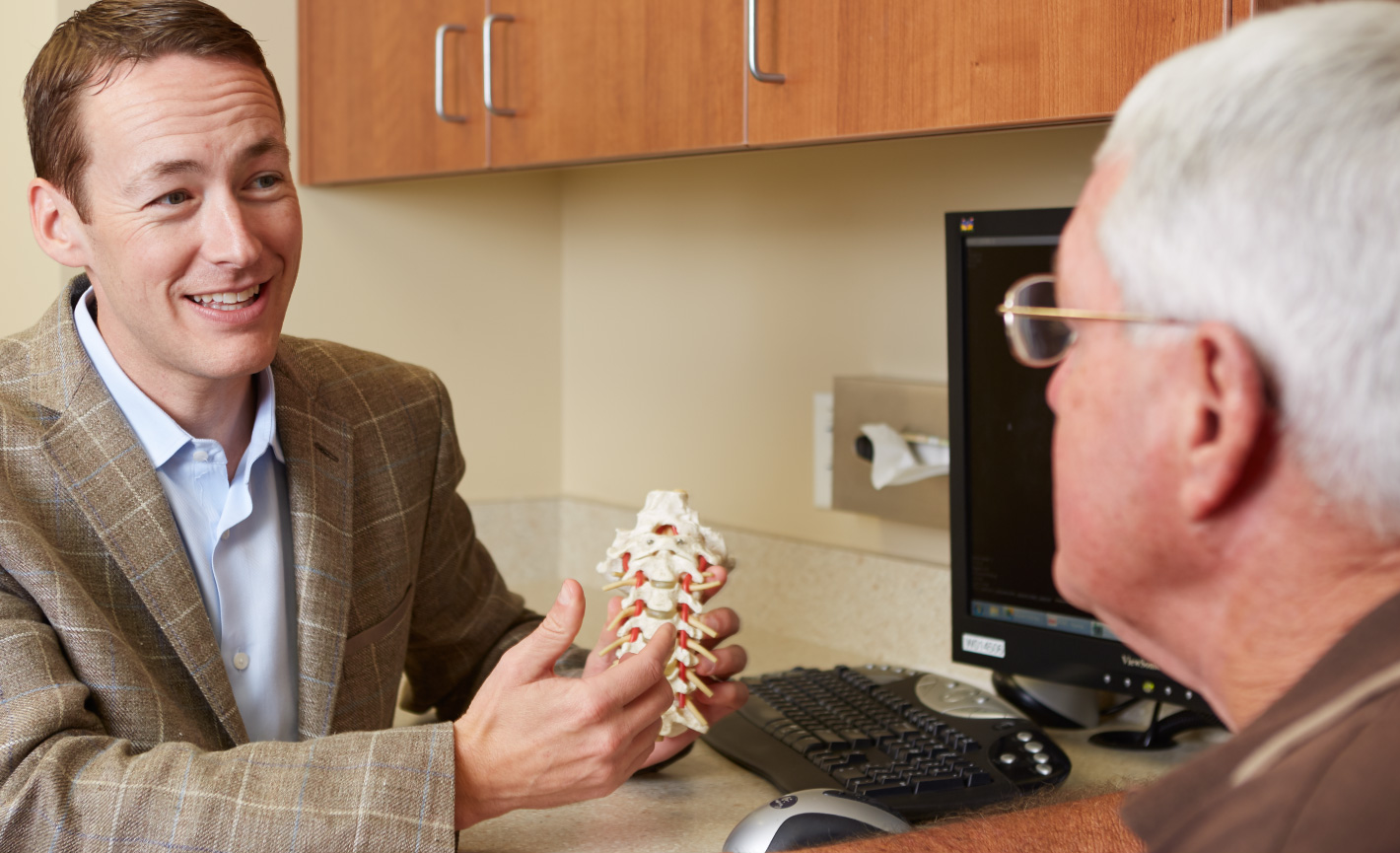Epidural Steroid Injection
Steroid injections are a common treatment for reducing pain in many parts of the body. In the procedure, a steroid and an anesthetic medication are injected into your epidural space – a fat-filled “sleeve” that cushions the spinal cord and nerves – to reduce swelling and block pain signals from reaching your brain. Steroid injections are guided by X-ray and done with local anesthesia. The procedure usually takes less than 15 minutes.
Lumbar Sympathetic Nerve Block
Diagnostic sympathetic blocks help us determine if there is damage to your sympathetic nerve chain, a bundle of nerve fibers that run the length of your spine. After receiving a local anesthetic, an anesthetic medication is injected into the nerve bundle in the area we suspect is causing the pain. Sympathetic blocks are also used therapeutically to provide longer-lasting pain relief.
Medial Branch Block
Facet joints are the flat, moveable connections in your spine, where your vertebrae fit together. Each facet joint has at least two medial branch nerves that send and carry messages to your brain. If the joints become swollen and irritated, an injection of a steroid and an anesthetic can be used to numb the medial nerves and keep pain messages from reaching your brain. The procedure is done while you are awake with local anesthesia and typically takes less than 15 minutes.
Medication
There are many prescription medications that may help you control your pain, including opioids, muscle relaxants, anti-inflammatory medications and antidepressants. Before and during your treatment with medications, we work with you to carefully determine which drugs are appropriate and safe for your individual circumstances. We also help you understand how your drugs work and how you can minimize the risks and maximize the benefits of your prescriptions.
Neuromodulation
Neurons are cells that process and transmit information to your brain through electrical and chemical signals. Neuromodulation devices are surgically implanted under your skin and work by blocking neurotransmitters from communicating pain signals to your brain.
Neuroplasticity
Chronic pain is complex and research has found that training the brain can markedly change and even eliminate pain. Neuroplasticty involves learning and practicing exercises that modify how your brain responds to pain.
Radiofrequency Neurotomy
Radiofrequency neurotomy disrupts nerve function and interrupts the transmission of pain signals to your brain. In the procedure, a probe inserted through a needle delivers controlled heat to the painful nerve. Neurotomy is performed while you are awake with local anesthesia, and the results typically last for 6 to 9 months.
Vertebroplasty/Kyphoplasty
For spinal fractures that do not improve with bracing and pain medications, these procedures are used to inject bone cement into the fracture to reduce pain.
Intrathecal Drug Implant
One of the most common treatment types. An intrathecal drug implant delivers medication directly to the spinal fluid around your spinal cord through a small, soft tube. The tube and pump are implanted surgically, and because they deliver medication directly to the source, much smaller doses of medication are needed to provide you relief. The exact dosage, rate and timing are determined by a programmer that communicates with the pump through radio signals and can be checked and adjusted by your pain physician or nurse.
Spinal Cord Stimulation and Dorsal Root Ganglion Stimulation
Another one of the most common types of treatment. When other treatments to regulate pain have failed, including surgery, spinal cord stimulation is a “last resort” procedure that may help. The procedure involves implanting small electrodes over the spinal cord or spinal nerve roots that “short circuit” pain impulses as they travel to the brain. It is done in two phases. The first is a trial phase in which temporary electrodes are implanted. The procedure involves very little pain and is done while you are awake without making incisions. When the electrodes are in place. For about a week, the electrodes remain in place and you control the stimulation with a small device. If the stimulation decreases your pain significantly, you may choose to move on to phase two. Phase two is the implantation of permanent electrodes, and occurs about 3-4 weeks after your trial. During the implantation, you will be given a local anesthetic and sedation. A small incision is made in your mid-back, and the electrodes are placed under your skin while a small battery pack is implanted in your upper buttock. The procedure involves little pain and you go home the same day. You control the stimulation with a hand-held device.




